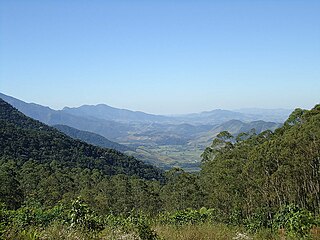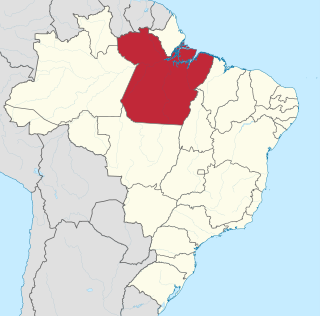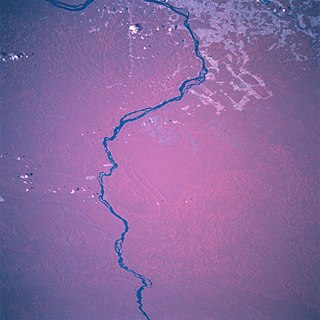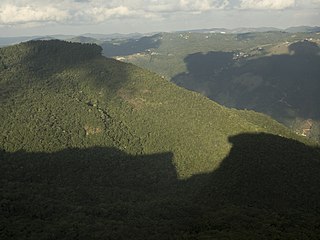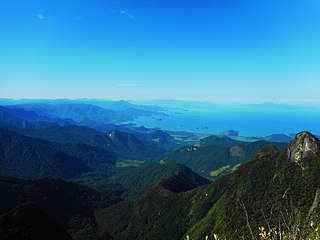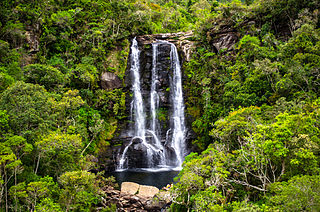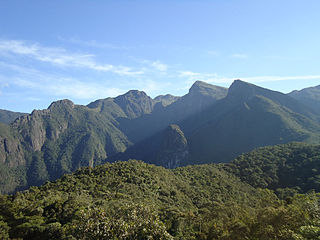
A protected area mosaic (Portuguese : mosaico de áreas protegidas) or conservation unit mosaic (Portuguese : mosaico de unidades de conservação) [lower-alpha 1] in Brazil is a mosaic of nearby, adjoining or overlapping protected areas of Brazil that are managed as a whole.
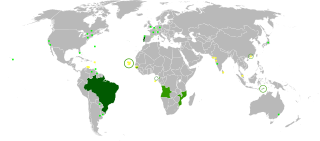
Portuguese is a Western Romance language originating in the Iberian Peninsula. It is the sole official language of Portugal, Brazil, Cape Verde, Guinea-Bissau, Mozambique, Angola, and São Tomé and Príncipe. It also has co-official language status in East Timor, Equatorial Guinea and Macau in China. As the result of expansion during colonial times, a cultural presence of Portuguese and Portuguese creole speakers are also found in Goa, Daman and Diu in India; in Batticaloa on the east coast of Sri Lanka; in the Indonesian island of Flores; in the Malacca state of Malaysia; and the ABC islands in the Caribbean where Papiamento is spoken, while Cape Verdean Creole is the most widely spoken Portuguese-based Creole. Reintegrationists maintain that Galician is not a separate language, but a dialect of Portuguese. A Portuguese-speaking person or nation is referred to as "Lusophone" (Lusófono).

Brazil, officially the Federative Republic of Brazil, is the largest country in both South America and Latin America. At 8.5 million square kilometers and with over 208 million people, Brazil is the world's fifth-largest country by area and the fifth most populous. Its capital is Brasília, and its most populated city is São Paulo. The federation is composed of the union of the 26 states, the Federal District, and the 5,570 municipalities. It is the largest country to have Portuguese as an official language and the only one in the Americas; it is also one of the most multicultural and ethnically diverse nations, due to over a century of mass immigration from around the world.

A protected area mosaic, or conservation mosaic is a collection of environmentally protected areas that are treated as a whole, either formally or informally. The protected areas may be of different types, including strictly protected areas and sustainable use areas, which may be administered at different public levels or privately. They may include areas assigned to indigenous people. A mosaic may be more flexible and effective than an attempt to combine all the areas into a single conservation unit under one agency. In practice, results with mosaics in different countries have been mixed.





